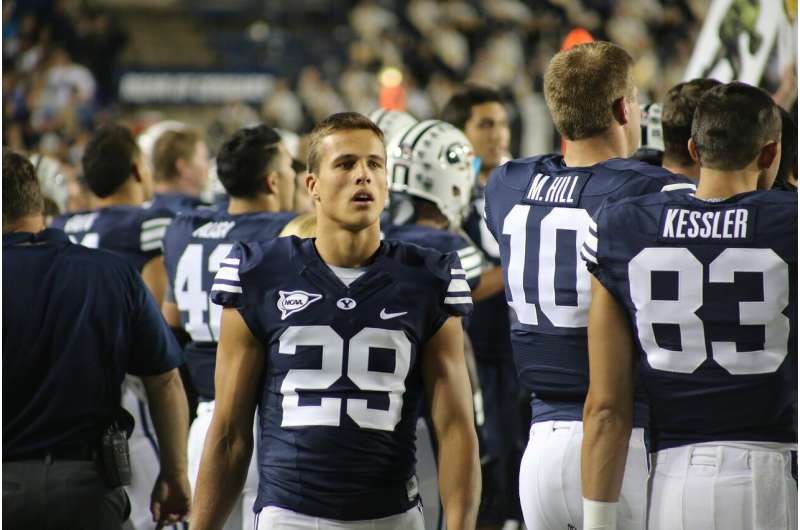Credit: CC0 Public Domain
High school seniors who play contact sports are roughly 50% more likely to misuse prescription stimulants in the next decade after graduation, compared to those who do not participate in these types of sports, a new University of Michigan study found.
Overall, 12th-graders who take part in sports—both contact or non-contact—are more likely than non-athletes to misuse prescription stimulants in young adulthood, said lead author Philip Veliz, associate research professor at the U-M School of Nursing.
By contrast, seniors who participate in non-contact sports are less likely to misuse prescription opioids over the next decade, although more likely to misuse stimulants than non-athletes.
This is the first known national study to assess how high school sports participation is associated with prescription drug misuse from ages 17-18 to ages 27-28. Data were collected from 4,772 U.S. 12th-graders between 2006-2017 from the Monitoring the Future study and followed for a decade.
Veliz and colleagues looked at high-contact (football, ice hockey, lacrosse, wrestling), semi-contact (baseball, basketball, field hockey, soccer) and non-contact sports (cross country, gymnastics, swimming, tennis, track, volleyball, weightlifting).
Other key findings:
- About 31% of high school seniors overall indicated misusing prescription drugs at least once at ages 17-18.
- With respect to contact sport participation, the percentage of 12th-graders who indicated past-year prescription stimulant misuse was 11%, which increased to about 18% by ages 21-22.
"Misuse of prescription opioids was higher for respondents who participated in contact sports during the 12th grade. However, participation in this type of sport was not associated with initiating this type of drug use in young adulthood," Veliz said.
While surprising, he said, it should be noted that prescription drug misuse of opioids declined among adolescents and young adults during the study period because opioids were becoming less available and there was greater awareness of risks of opioid misuse during this period.
Prescription drug misuse of both opioids and stimulants has declined substantially among adolescents since 2010, Veliz said.
"However, this study found that some types of former high school athletes are at greater risk of misusing these drugs and initiating them during early adulthood (between ages 19 and 21)," he said.
Veliz was surprised that adolescents in non-contact sports had greater odds of initiating stimulant misuse during young adulthood than those who did not play a non-contact sport. Non-contact sports may yield a culture of self-control or an aversion toward physical harm, but this does not mean participants don't value competitiveness, he said.
Studies suggest that participants in non-contact sports have better academic outcomes and may view sports as a resume builder in the admissions process. Moreover, young adults commonly misuse stimulants because they believe, erroneously, that this boosts academic performance, so stimulants may appeal to this subgroup, Veliz said.
"The findings reinforce screening during adolescence as nearly one-in-three high school seniors engage in prescription drug misuse," said Sean Esteban McCabe, senior author and director of DASH, the Center for the Study of Drug, Alcohol, Smoking, and Health in the U-M School of Nursing. "Increased prescription stimulant misuse following high school warrants ongoing monitoring during young adulthood, especially among athletes."
Veliz said his next set of studies will focus on the relationship between sports participation and stimulant misuse among adolescents who are being treated for ADHD.
The study was published in advance online and will appear in the American Journal of Epidemiology.
More information: Philip T Veliz et al, The Initiation and Developmental Course of Prescription Drug Misuse among High School Athletes During the Transition Through Young Adulthood, American Journal of Epidemiology (2022). DOI: 10.1093/aje/kwac132
Journal information: American Journal of Epidemiology
Provided by University of Michigan





















